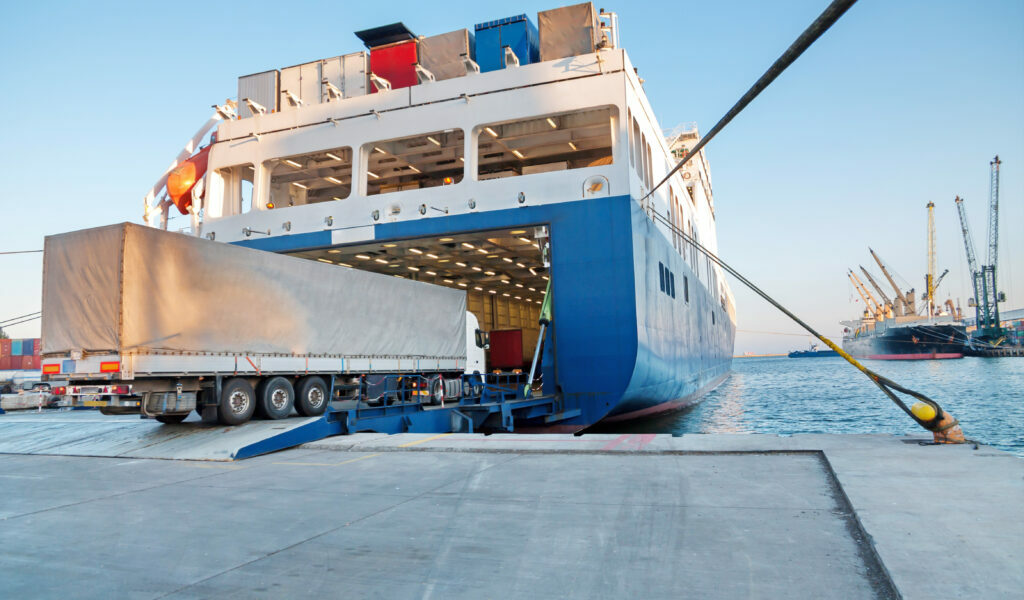Shipping a vehicle abroad can be a daunting task, especially when trying to do it economically. Whether you’re relocating for work, sending a car to a family member, or moving abroad for a new adventure, understanding the process, costs, and ways to save money can make the experience less stressful and more affordable. Here, we’ll discuss about the steps and strategies for economically shipping your vehicle abroad, covering the selection of shipping methods, the importance of research and comparison, the role of preparation and documentation, as well as tips for minimizing costs and avoiding hidden fees.
1. Choose the Right Shipping Method
The first step in shipping your vehicle abroad economically is choosing the right shipping method. There are primarily two options: Roll-on/Roll-off (RoRo) and container shipping.
- Roll-on/Roll-off (RoRo): This is often the most cost-effective method for shipping vehicles. Your car is driven onto the ship, secured on the deck, and then driven off at the destination port. However, it’s worth noting that not all destinations offer RoRo services, and this method may not be suitable for luxury or vintage cars as it exposes the vehicle to the elements.
- Container Shipping: This method offers more protection for your vehicle as it is secured within a container. If you are shipping a luxury, vintage, or sensitive vehicle, this might be the preferred method. Container shipping also allows you to pack personal items in the car or container, potentially saving on moving costs. However, it is generally more expensive than RoRo shipping.
2. Research and Compare Shipping Companies
Once you’ve decided on the shipping method, the next step is to research and compare shipping companies. Look for companies with good reputations, who specialize in international vehicle shipping. Request quotes from multiple companies to compare prices and services. Be sure to ask about what is included in the quote to avoid any hidden fees later on.
- Read Reviews and Testimonials: Look for customer reviews and testimonials to gauge the reliability and quality of service of the shipping company.
- Check for Licenses and Registrations: Ensure that the shipping company is licensed and registered with relevant authorities like the Federal Maritime Commission (FMC) for shipping to and from the United States.
3. Understand the Costs Involved
The cost of shipping a vehicle abroad can vary widely based on several factors including the destination, type of service (RoRo or Container), time of year, and the size of the vehicle. Understanding these costs is crucial to budget effectively.
- Shipping Costs: These are the costs charged by the shipping company to transport your vehicle from one port to another.
- Insurance: While optional, shipping insurance is highly recommended to protect your vehicle against damage or loss during transit.
- Customs and Import Taxes: Each country has its own regulations and charges for importing vehicles. It’s important to research these costs beforehand as they can significantly affect the overall cost.
- Other Fees: These can include port handling fees, documentation fees, and delivery charges from the port to your final destination.
4. Prepare Your Vehicle for Shipping
Preparing your vehicle properly can help avoid delays and additional charges.
- Clean Your Vehicle: A clean car makes for easier inspection, reducing the risk of quarantine or cleaning fees in the destination country.
- Document Existing Damage: Take photos and document any existing damage on your vehicle. This will be important for insurance purposes and in case you need to make a claim for any damage incurred during shipping.
- Remove Personal Items: Unless you’re using a container and have agreed with the shipping company, remove all personal items from the vehicle. Personal items can add weight and might not be covered by shipping insurance.
5. Handle Documentation Carefully
Proper documentation is essential for a smooth shipping process. This typically includes the original title of the vehicle, a bill of sale, proof of identity, and a letter of permission from any lienholders. The specific requirements can vary by destination, so check with the shipping company and the destination country’s customs office.
6. Time Your Shipment
The timing of your shipment can impact the cost. Shipping rates can fluctuate based on the season, with higher prices typically seen in the summer months when demand is higher. If possible, plan your shipment during the off-peak season to take advantage of lower rates.
7. Look for Consolidation Opportunities
If you’re using container shipping, look for opportunities to consolidate your shipment with others to save on costs. Some companies offer shared container services, allowing you to pay for only the space your vehicle occupies.
8. Be Aware of Hidden Fees
Always ask for a detailed breakdown of the quote and be on the lookout for any hidden fees. Some companies might not include port fees, customs clearance, and other charges in their initial quote. Knowing all the potential costs upfront will help you budget more accurately and avoid surprises. Visit Shiply to learn more.
Conclusion
Shipping your vehicle abroad economically requires careful planning, research, and preparation. By choosing the right shipping method, comparing shipping companies, understanding the costs involved, preparing your vehicle properly, handling documentation carefully, timing your shipment, looking for consolidation opportunities, and being aware of hidden fees, you can save money while ensuring that your vehicle arrives safely at its destination. Remember, the cheapest option may not always be the best, so weigh the costs against the services provided to make the most informed decision for your needs.






